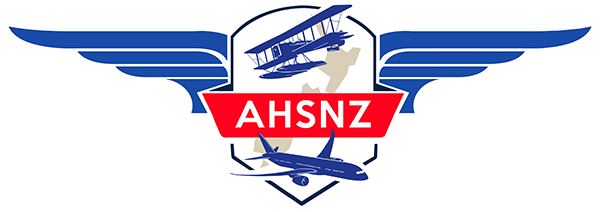Tiger Moths at Rongotai
Almost 82 years ago, in 1939, the first New Zealand built Tiger Moth trainers appeared from the newly commissioned de Havilland aircraft factory on Rongotai airfield. These military Moths built for the Royal New Zealand Air Force were, however, not the first DH82s to be seen on Rongotai as earlier a couple of dozen British built examples had been imported by New Zealand agent Douglas Mill, two of which had been purchased by Wellington Aero Club. The first was ZK-AFZ which had been delivered in March 1938 and was followed a little over a year later by the second, ZK-AGW. As well, other examples imported pre-war undoubtedly passed through Rongotai either before or following transitioning Cook Strait as was mandatory in those times or, alternatively, they circled Paekakariki railway station to permit the stationmaster to record their transition.
The construction of DH82s by de Havilland New Zealand has been well documented and the writer does not feel it necessary to repeat details here, suffice to record that 181, all for the RNZAF, were built at the Rongotai facility between 1939 and 1945, although construction of 24 of these originated in the UK, 12 at Hatfield and 12 at Cowley. The end of production however was not a curtain-call for Rongotai’s Tiger Moth activity and for thirteen years after the last new Moth rolled out de Havilland’s doors, until the airfield closed for redevelopment in 1958, they played a major role in the airfield’s day-to-day activities.
With the War over and Moth production concluded the slowdown in de Havilland’s activity saw a reduction in its workforce and many engineers whom had, prior to hostilities been employed by aero clubs and the like throughout the country, departed to resume work with former employers. Others however saw opportunities to establish their own businesses in the reemerging civil flying environment.
One such ex-de Havilland employee was Lynn “Mac” MacGregor who in the late nineteen forties established Aircraft Engineering Limited in Wellington and set-up business in leased space in the Council hangar. Prior to joining de Havilland MacGregor had at some point been involved with Auckland aircraft engineer, Richard Downey, and had been associated with a group planning to put the French Pou-du-Ciel into commercial production.
Prior to the establishment of Aircraft Engineering the government had begun a programme of allocating surplus RNZAF DH82 to clubs which had forfeited aircraft at the onset of War but it appears the government regarded a ‘Tiger Moth as a Tiger Moth’ and saw no necessity to return Moths surrendered for the war effort to their former owners. Although Wellington Aero Club’s two, AFZ and AGW, survived their military incarceration, they were reallocated elsewhere but the club’s Vega Gull ZK-AFI returned to its former owner as ZK-AKV. Between December 1946 and January 1948 Wellington Aero Club was allocated eight DH82s.
Four were noted as “On Repayment”, presumably as replacements for aircraft forfeited in 1939, the other four were detailed as “Free Issue”. Several of these Moths required substantial work to return them to airworthiness and subsequently not all were destined to fly with the club.
McGregor’s company commenced work maintaining the Wellington club’s aircraft, assembling some of the first Austers to arrive in the country and overhauling Moths. However, by 1949 an emerging agricultural aviation industry with its associated demand for cheap aircraft saw it design and fit superphosphate hoppers to many DH82s, this became a significant part of that company’s business. The first recorded installation by Aircraft Engineering took place
early in 1950 when ZK-AIO (c/ n3833) was fitted with a “MacGregor” hopper for Auckland based Barr Brothers Ltd. Aircraft Engineering’s involvement converting DH82 trainers to agricultural aircraft meant that for four or five years from 1950 Rongotai airfield was constantly visited by a steady stream of Tigers for conversion while on the opposite side of the field de Havilland continued to “civilianize” former RNZAF Moths
Such was the frenetic pace with which the agricultural aviation industry was developing that a small number of aero clubs seized the opportunity to boost their coffers by becoming involved in this evolving industry and Wellington’s Aero Club was one of these.
Minutes from the Club’s May 1950 committee meeting indicate that it had entered into a threeway agreement to create a company to engage in aerial topdressing. As well as committing £292 towards establishing the business the club agreed to supply two aircraft, DH82s ZK-ASS (c/n3223) and NZ1426 (DHNZ106) which became ZK-AUP, both aircraft had been ex RNZAF “Free Issues” although both were still to be made airworthy. A second shareholder in the aerial work venture, which was registered as Aerial Fertilising Company Limited, was Aircraft Engineering Limited whose contribution was to overhaul and install hoppers in the two DH82s. The third shareholder Kelvin Day, was a Wellington Aero Club member and Wellington manager for the Mobil Oil Company.

